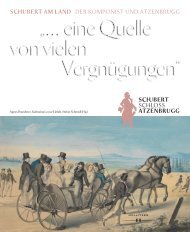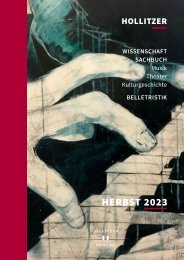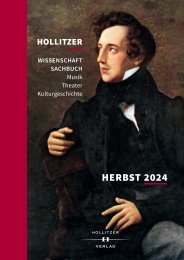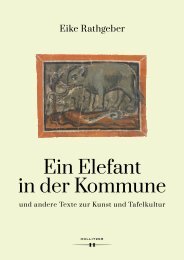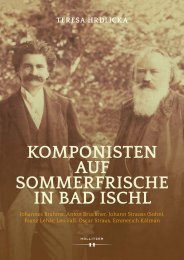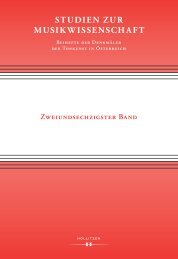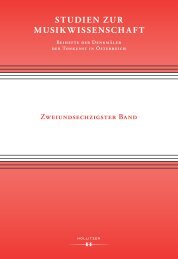Create successful ePaper yourself
Turn your PDF publications into a flip-book with our unique Google optimized e-Paper software.
women musicians outside the palace are also examined within the framework of<br />
the newspaper advertisements of the period, registrations at the Annuals of Commerce<br />
of the Orient, and petitions in the Ottoman State Archives. Additionally, a list<br />
of female students who were sent to Europe, and music scores from women who<br />
composed during the late Ottoman Empire are provided to evaluate the general<br />
situation of women composers in the nineteenth- and twentieth-century Ottoman<br />
Empire in the axis of their interactions with Western music.<br />
Chapter IV expands on the first phase of examining the productive/creative<br />
conditions of the composers in this research, focusing on the socio-political environments<br />
in which the composers lived. The totality of political, economic, and<br />
social changes, which begins with the period called Tanzimat (reorganisations) in<br />
Ottoman Turkish, is examined and analysed through modernisation, Westernisation,<br />
and Europeanisation approaches in Ottoman Empire/Turkish Republic historiography.<br />
In this chapter the new institutions, their interactions, the manifestations<br />
generated by such interactions, and their transmission, from the monarchy<br />
to the Turkish Republic are surveyed, while emphasising the distinctive factors<br />
within this long process that affected the works of the three composers. From<br />
time to time, the narrative in the chapter takes the road less travelled, leaving the<br />
path paved by the official historiography and gives space to composers’ personal<br />
experiences, allowing their voices to be heard.<br />
Chapter V contains perspectives on two other conditions that determine production<br />
and creativity: familial and educational backgrounds. The approaches include<br />
analysing the existing biographical sources and bringing their functions as<br />
materials to the foreground.<br />
The familial environment of all three composers – the fathers and/or grandfathers<br />
of whom were bureaucrats –, the extent of the support and encouragement<br />
they received from their parents, and their educational opportunities as part of<br />
the favourable circumstances provided by family are kept within the framework<br />
of private conditions, and the extent of these parameters’ influence on the musical<br />
personalities of the composers is investigated in this chapter.<br />
Chapter VI delves into the historical and contemporary literature about women<br />
composers and musicians in the Ottoman Empire/Turkish Republic; the scope<br />
of such studies with regard to music and gender, as well as the range of their<br />
content are discussed. The section ‘Implicit Biases Against <strong>Women</strong> <strong>Composers</strong>’<br />
constitutes a significant part of this chapter, thematising the manifestations of<br />
fundamental issues and questions in gender and music studies, examples of which<br />
became visible after 1980. In the case of Turkey, there are some possible issues<br />
and questions to be raised specifically in this regard. While reading the essays and<br />
articles included in this section, a method of investigating the possible questions<br />
to be posed to the texts is pursued.<br />
30





